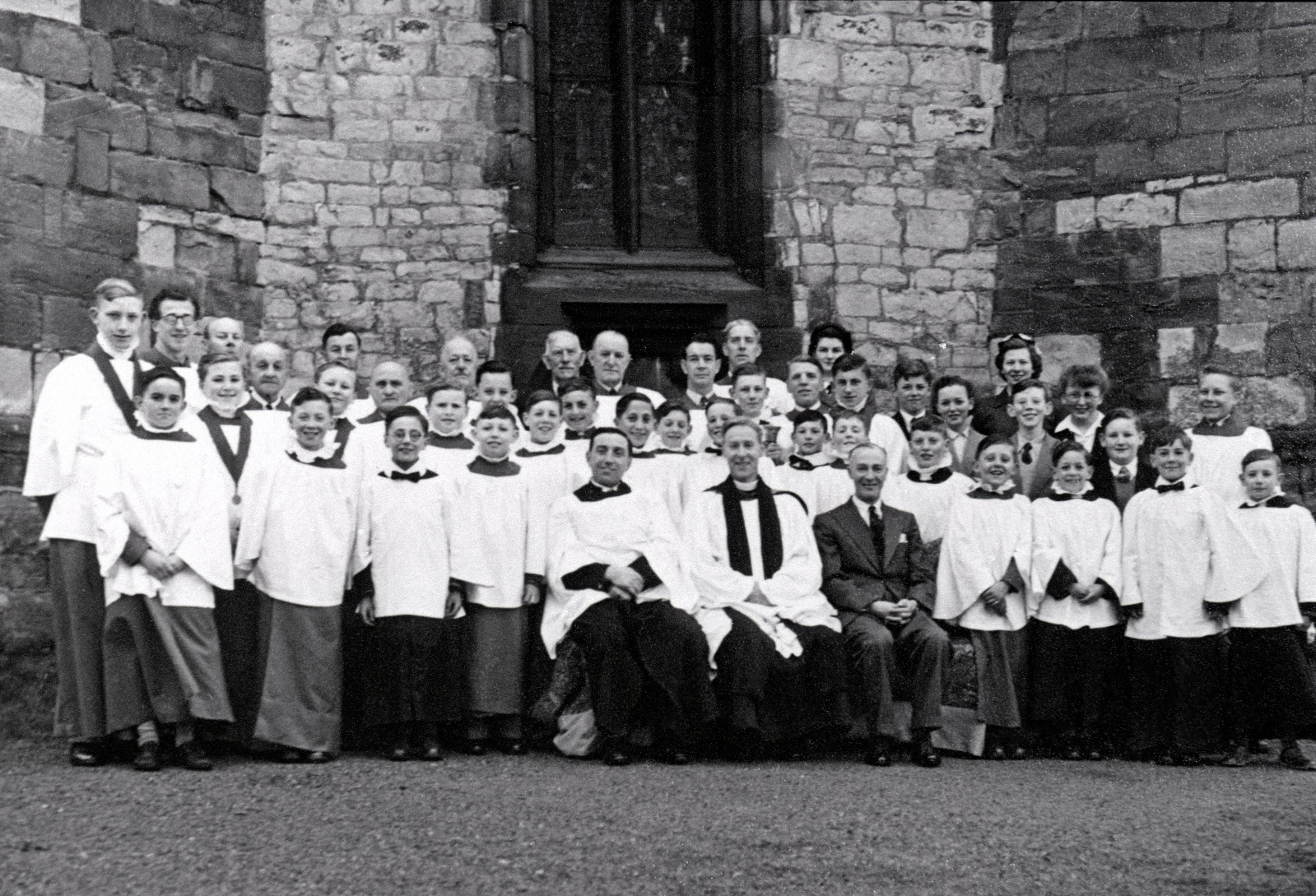CARDALL’S CORNER – A Chorister Looks Back – October 2016
By Alan Griffin
It has to be said that for lads like me growing up in Southam in the post-war years, there were few diversions. One long-established institution that was still thriving in the 1940’s and 50’s was the Parish Church Choir which in common with most church choirs of that era was an all-male body.
I joined at the age of seven in 1949 and shortly after R T Murray became Rector, my two brothers Bill & Phillip were also choirboys and I sang as a boy chorister and as an adult for the next twenty years. Not least among the tangible benefits of membership was the fact that we were paid, albeit only a few pence for each service and practice attended. Weddings and funerals were looked on as perks since attendance at those attracted extra payment and in the case of the latter, time off school as well. The choir regularly turned out twenty or more boys and up to ten men.
Some of my earliest choir memories are of the annual Coventry Diocesan Choirs Festival which before the war had been held each October in the cathedral but following its destruction in 1940 the festival was held in the neighbouring church of Holy Trinity. I have vivid memories of coach journeys into Coventry on foggy autumn evenings and seeing the huge piles of rubble left by the bombing.
The choir had a considerable reputation and was invited to take part in two live radio broadcasts on the old Home Service of the BBC. We sang services in such imposing and famous churches as St George’s Chapel, Windsor and Bath Abbey. Choir outings were eagerly anticipated and these frequently took us on trips down to the West Country and another indelible memory is of passing Filton Aerodrome in Bristol on one such outing and seeing the Bristol Brabazon airliner on the runway. For kids who had never seen an aircraft on the ground and nothing larger than a Tiger Moth from Southam Airfield in flight, the sight of such a huge aircraft was unforgettable. Far larger than any of today’s passenger jets the Brabazon had a wingspan of 70 metres and was powered by eight engines. On another such day trip I remember we drove past the Avonmouth oil refinery to see the destruction wrought by a major fire there a few weeks earlier.
I cherish memories of my time in the church choir. Sad to reflect that it, like most similar choirs, has now been consigned to the history books. That said, I think that for most of us being a chorister was a very rewarding experience and it gave us an insight into what being a team member was all about. What it also gave rise to, was a love of and appreciation of sacred choral music and classical music in general which has endured and which continues to sustain me sixty years on. Happy days.
The photograph was taken on Easter Day 1954 and shows the choir at Southam St James Church. The Rector is Revd R T Murray, the choirmaster to his right wearing a surplice is Robert Follis and the man on the Rector’s left in a suit is John Hobley, the Tower Captain (bell ringers). Alan Griffin is on the left of the choirmaster standing between Tony Fell and John Thorne.
First published in the District Advertiser, Southam edition October 2016.


Leave A Comment